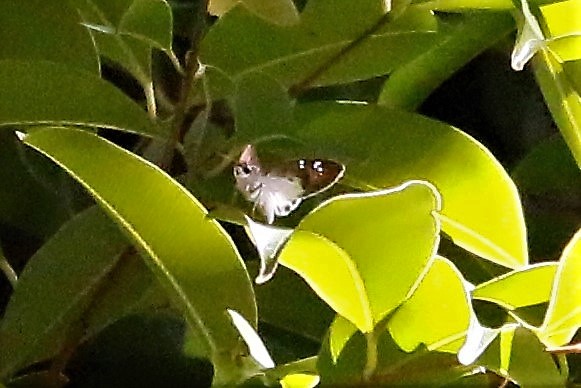The month of July saw just a few butterflies due to the rainy weather and the extended lockdown. Most of the photos here are those butterflies which appeared in late June and early July. Most of them were seen basically from nearby parks and gardens.
This skipper was once described by the literature as a common garden butterfly but nowadays I believe you can hardly see them.
Grass Demon (Udaspes folus)
It was seen on a periwinkle (Catharanthus roseus) flower which is located in my neighbourhood.
So lucky that it stood there for a couple of minutes.
Many butterflies (especially rare ones) seldom open their wings but when one opens it wings, it's like a grand invitation for you to appreciate their beauty.
The one above had been identified by an expert as a male Jamides bochus nabonassa (Dark Cerulean).
Common Cerulean (Jamides celeno aelianus)
A female Abisara saturata kausambiodes (Malayan Plum Judy)
Arhopala perimuta perimuta (Yellowdisc Oakblue)
Athyma kanwa kanwa (Dot-dash Sergeant)
The above is a seldom seen female Athyma nefte subrata (Colour Sergeant)
Observing a butterfly ovipositing in your garden is a chance of a life time. Here is a common female Pygmy Grass Blue (Zizula hylax pygmaea) doing just that.
The female Pygmy Grass Blue was seen ovipositing on a young flower bud of a Ruellia squarrosa (Water Bluebell).
You can see one of its eggs here
Another one can be seen on the top flower bud.
To minimise the risk of losing all its eggs, it will spread it across all the young flower buds as seen from the above photos.
Tailed Jay (Graphium agamemnon agamemnon)
A common butterfly along the forest trails which is more often observed flying around than landing on a leaf.
Spotted Black Crow (Euploea crameri bremeri)
This is an uncommon 'Delieas' which is reported to be a migrating butterfly.
Red-based Jezebel (Delias pasithoe parthenope)
Check out its different antenna colors
Common Imperial (Cherita freja frigga)
Pointed Palmfly (Elymnias penanga penanga)
The above butterfly is a rather uncommon male which has a beautiful deep bluish purple on its forewing upperside.
Trying to blend in with the color of the leaves.
A loving pair of Dark Banded Ace (Halpe ormenes vilasina)
Harlequin (Taxila haquinus haquinus)
There was once a campaign in Singapore to save its population in the island.
Here are a few common skippers which you might probably encounter
Swinhoe Ace (Halpe wantona)
Halpe pelethronix pelethronix (Peninsular Ace)
Potanthus omaha omaha (Lesser Dart)
Plain Tufted Lancer (Isma iapis iapis)

























































